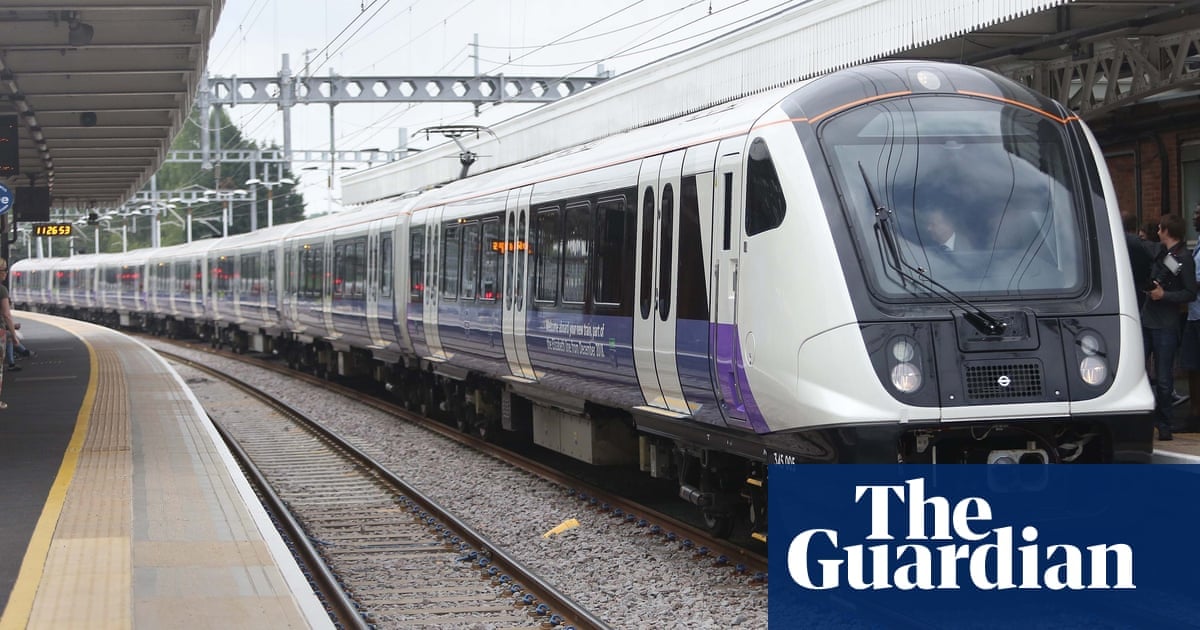Summary
A passenger on London’s Elizabeth line was forced to run several meters along a platform at Ealing Broadway station after his hand became trapped in the closing doors of a departing train on 24 November.
Railway staff intervened to pull him away, and the train stopped after moving 17 meters. The passenger sustained minor injuries.
The Rail Accident Investigation Branch (RAIB) is investigating the incident, part of a series of similar “trap and drag” cases, to improve safety measures.
Transport for London and the operator, MTR, are cooperating fully.



So, the safety mechanism shouldn’t have permitted that.
But on the other hand, I kind of feel like at least some of this is a human factors issue here too. One assumes that the passenger in question had missed the train and was trying to stop the doors from closing so that the train couldn’t leave so that he wouldn’t need to take the next. I’ve seen signs on trains with automatic doors warning people not to obstruct the train doors. It’s a problem for other people on the train if people keep blocking the train from moving by tripping the safety system, but given that it’s in the blocker’s interest to halt the train so that they can get on it, you can tell people not to do it, but they’re probably still going to do so.
I wonder if a better solution would be for the door that halts the flow of passengers to be on the station platform rather than letting people right up to the train and then having the train door be what’s expected to terminate the flow. Like, have a second set of turnstiles spanning the platform that just stop letting people in at a certain point.
Wikipedia lists many countries that use platform screen doors as a safety measure, for both train and bus platforms. Below, Bogotá.
The Elizabeth line is already built with platform screen doors, although I believe they’re only on underground sections. I don’t know enough about this station to say whether it had them; I expect not.
Platform screen doors tend to be used underground mainly for airflow management. They are not primarily for safety.
They work less well outside. No overhead structure to anchor to, weather has a larger impact (particularly snow/ice), and they can become something to climb rather than an obstacle.
Some metro projects in India are using them outside though.
I haven’t personally traveled on this station before but looking online at pictures it seems this station is overground not underground and doesn’t have the platform screen doors.
I do know other lines have started to add platform screen doors as well on the London Underground namely Waterloo Underground Station and the Jubilee line.
On underground lines, the PSDs are mostly for air-sealing. It allows you to air-condition the platforms without trying to cool the tunnels, and it helps the piston effect of moving trains pull air through the tunnels, rather than just swirl air around each platform.
Also probably helps for fire engineering.
Hey look it’s star citizen
Ah, interesting, thanks!
Not a lot of passenger rail here in the US, though now that you show that picture, I think I recall seeing an internal airport train that has some kind of similar screen.
pokes around
Yeah, I think that it’s the airport train at Atlanta that I’m thinking of, looks like they have them.
reads further
It sounds like the goal of these are somewhat different. Hmm. According to that article, there are some problems with providing direct passenger access to the space with the rail lines – people committing suicide using the train, people falling onto the tracks, people intentionally running around in the rail tunnels via access from the platform, unwanted movement of air between the passenger and rail area, and people tossing garbage into the track area, and this avoids those issues; the passengers still get access to the train interior when there’s a train present, but not to the track.
considers
It might also provide a second safety mechanism – I assume that the train can’t move if either the safety mechanism on the station platform door or the train door detects that its door is obstructed from closing, but I think that this would still permit the potential for people running late for a train aiming to halt the train from leaving by tripping the safety mechanism on both doors.
kagis
Hmm.
https://old.reddit.com/r/tall/comments/613ogj/guys_head_gets_stuck_between_train_doors_xpost/
Based on the comment on this post, on the London subway, they partially mitigate people trying to block the train from leaving by not always fully reopening the doors if they hit an obstacle. This guy apparently got his head wedged in the door, and I guess whatever degree to which they will reopen, if any, wasn’t enough to retract it.
New sign on doors:
"The door WILL close.
Puny human flesh is not an obstacle worthy of stopping the inevitable closure of the door."
“…on the other hand…”
I feel like there are massive, unsolvable problems with this idea (besides the considerable cost):
Yeah, completely unsolvable apart from the fact these have been solved in other countries 🙄 - not with turnstiles but with the additional doors which line up with train doors.
It’s the usual British “it won’t work” without even trying to explore what other nations (just accros the channel) implemented.
You’d need some amount of more platform space than you would with the present system, true enough.
It could be occupied prior to that. The limit would be the departure of the previous train.
I’m thinking of the security turnstiles that you can’t hop. They look like this sort of thing: